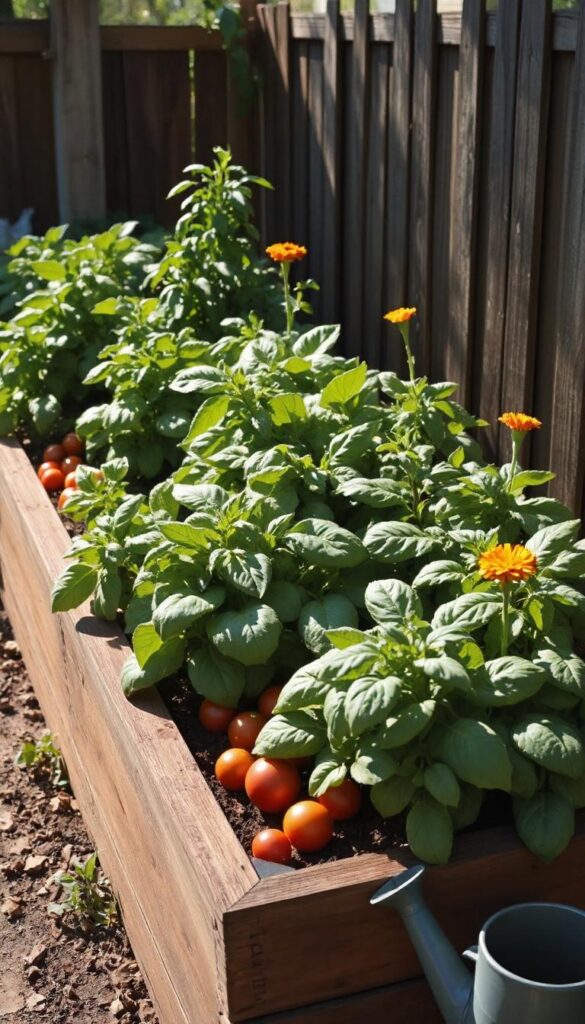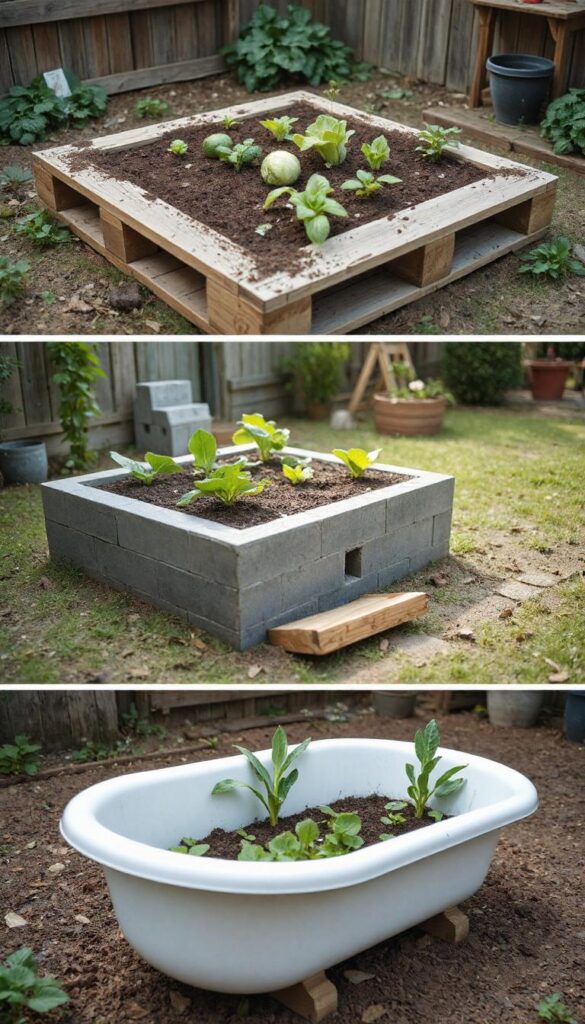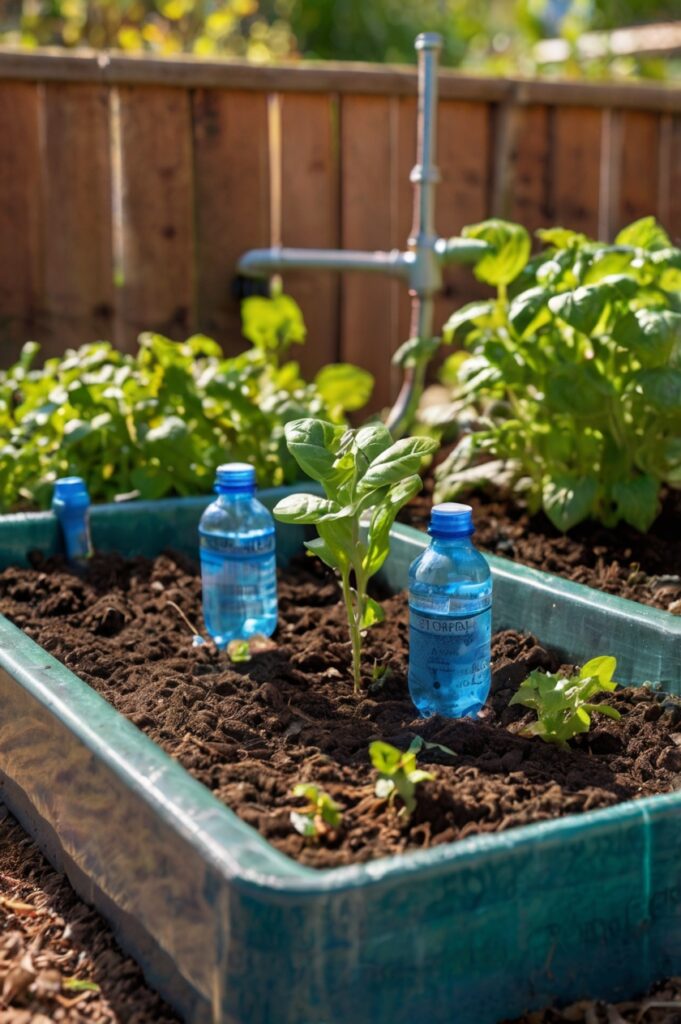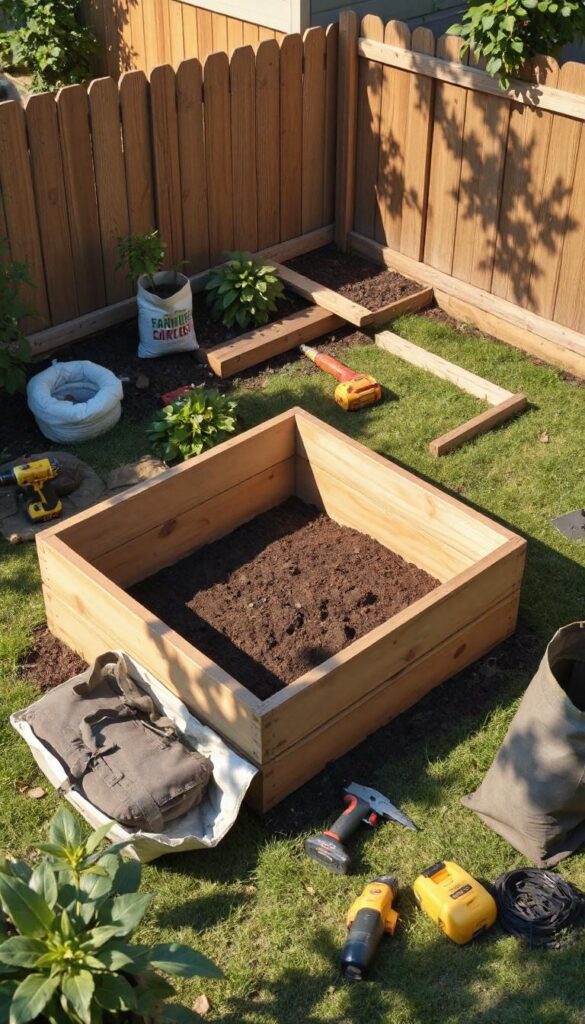Transform Your Backyard with Affordable, Space-Saving Solutions DIY Raised Garden
Why Raised Garden Beds Are Every Gardener’s Secret Weapon
Tired of wrestling with rocky soil, weeds, or a sore back from bending over? Meet the raised garden bed: your ticket to a thriving, low-maintenance garden that won’t break the bank.
I built my first raised bed five years ago after moving into a home with clay-heavy soil. Frustrated by stunted tomato plants, I cobbled together scrap wood and compost—and the results blew me away. My yields doubled, weeds vanished, and my knees thanked me. Today, I’ll show you how to recreate that magic for under $50.

Why Raised Garden Beds? (Spoiler: They’re Game-Changers)
1. Better Soil Control
Raised beds let you bypass poor native soil. Fill them with a custom mix of compost, peat moss, and vermiculite for optimal drainage and nutrients.
Proven Fact: A University of Maryland study found raised beds increase vegetable yields by 30–50% compared to traditional gardens.
2. Less Weeding, More Growing
Elevated soil = fewer weeds. Add cardboard or landscape fabric at the base, and say goodbye to back-breaking weed patrols.
3. Perfect for Small Spaces
Urban gardener? Raised beds maximize square footage. My neighbor grows enough kale and herbs for her family of four on a 4’x8’ balcony setup.
4. Extended Growing Seasons
Soil in raised beds warms faster in spring. Pair with row covers, and you’ll harvest lettuce weeks earlier than in-ground plots.
Planning Your Raised Bed: Location, Materials & Size
Choosing the Right Spot
- Sunlight: 6–8 hours of direct sun daily (leafy greens tolerate partial shade).
- Accessibility: Leave 18–24” between beds for wheelbarrows and kneeling.
- Slope: Avoid low areas where water pools.
Real-Life Example: My friend Jake placed his beds near his kitchen door. “I’m 10x more likely to harvest herbs when they’re right outside,” he says.
Budget-Friendly Materials
| Material | Cost | Lifespan | Best For |
|---|---|---|---|
| Cedar | 30–30–50 | 10–15 yrs | Long-term projects |
| Pine | 15–15–30 | 5–7 yrs | Temporary beds |
| Cinder Blocks | 1–1–3/block | 20+ yrs | Modern, modular designs |
| Upcycled Pallets | Free | 3–5 yrs | Ultra-budget builds |
LSI Keywords: affordable garden bed materials, cheap raised bed ideas, recycled pallet gardens

Ideal Dimensions
- Height: 12–18” (deeper for root crops like carrots).
- Width: 3–4’ (easy to reach the center without stepping in).
- Length: Customizable, but 8’ is standard for lumber.
Pro Tip: Start small! A 4’x4’ bed is manageable for beginners.
Step-by-Step Guide to Building a $40 Raised Bed
Tools & Materials Needed
- Materials:
- (4) 2”x6”x8’ cedar boards ($25)
- (1) 4”x4” post for corners ($8)
- Deck screws ($5)
- Cardboard/newspaper (free)
- Tools:
- Drill
- Saw (or have lumber pre-cut at the store)
Assembly Instructions
- Cut the Boards:
- Saw the 4”x4” post into four 12” corner stakes.
- Cut two cedar boards into 4’ lengths for the ends.
- Build the Frame:
- Screw the 8’ and 4’ boards together to form a rectangle.
- Attach corner stakes to reinforce.
- Prepare the Site:
- Clear grass and lay cardboard to smother weeds.
- Fill with Soil:
- Use a 50/30/20 mix of compost, topsoil, and perlite.
Watch Out: Avoid pressure-treated wood (toxic chemicals can leach into soil).
5 Budget Hacks from Frugal Gardeners
- Repurpose Materials:
- Old dresser drawers, wine crates, or bathtubs make quirky beds.
- Bulk Soil Buying:
- Split a truckload of compost with neighbors (cuts costs by 60%).
- Grow “Cheater” Plants:
- Cherry tomatoes, zucchini, and bush beans thrive with minimal care.
- Seasonal Sales:
- Stock up on soil/compost in fall (stores discount leftovers).
- DIY Drip Irrigation:
- Use recycled soda bottles with pinholes (saves $100+ on systems).
Expert Insight: “Raised beds reduce water waste by 50%,” says Kevin Espiritu, founder of Epic Gardening.

Planting & Maintaining Your Raised Bed
Best Plants for Beginners
- Spring: Lettuce, radishes, peas
- Summer: Tomatoes, peppers, basil
- Fall: Kale, spinach, garlic
Pro Tip: Plant marigolds along edges to deter pests naturally.
Seasonal Care Checklist
- Spring: Refresh soil with compost.
- Summer: Mulch to retain moisture.
- Fall: Plant cover crops like clover.
Common Raised Bed Mistakes (And How to Avoid Them)
- Overcrowding: Follow seed spacing guidelines—those tiny plants need room!
- Skipping Soil Testing: A $20 kit prevents nutrient imbalances.
- Ignoring Crop Rotation: Prevent disease by shifting plant families yearly.
Conclusion: Your Raised Bed Adventure Starts Now
Building a raised garden bed isn’t just about growing food—it’s about growing confidence. Whether you’re repurposing old shelves or constructing a cedar masterpiece, remember: every pro gardener started with a single bed.
Your Next Steps:
- Share your build on Instagram with #DIYGardenBeds.
- Join our newsletter for free soil mix recipes.
- Comment below with your questions—I’ll reply within 24 hours!
How deep should a raised garden bed be?
Aim for 12–18” to accommodate most vegetable roots.
What’s the cheapest material for raised beds?
Upcycled pallets or cinder blocks cost under $20.



Pingback: How to Identify and Treat Common Garden Pests Naturally - gardendiyhaven.com